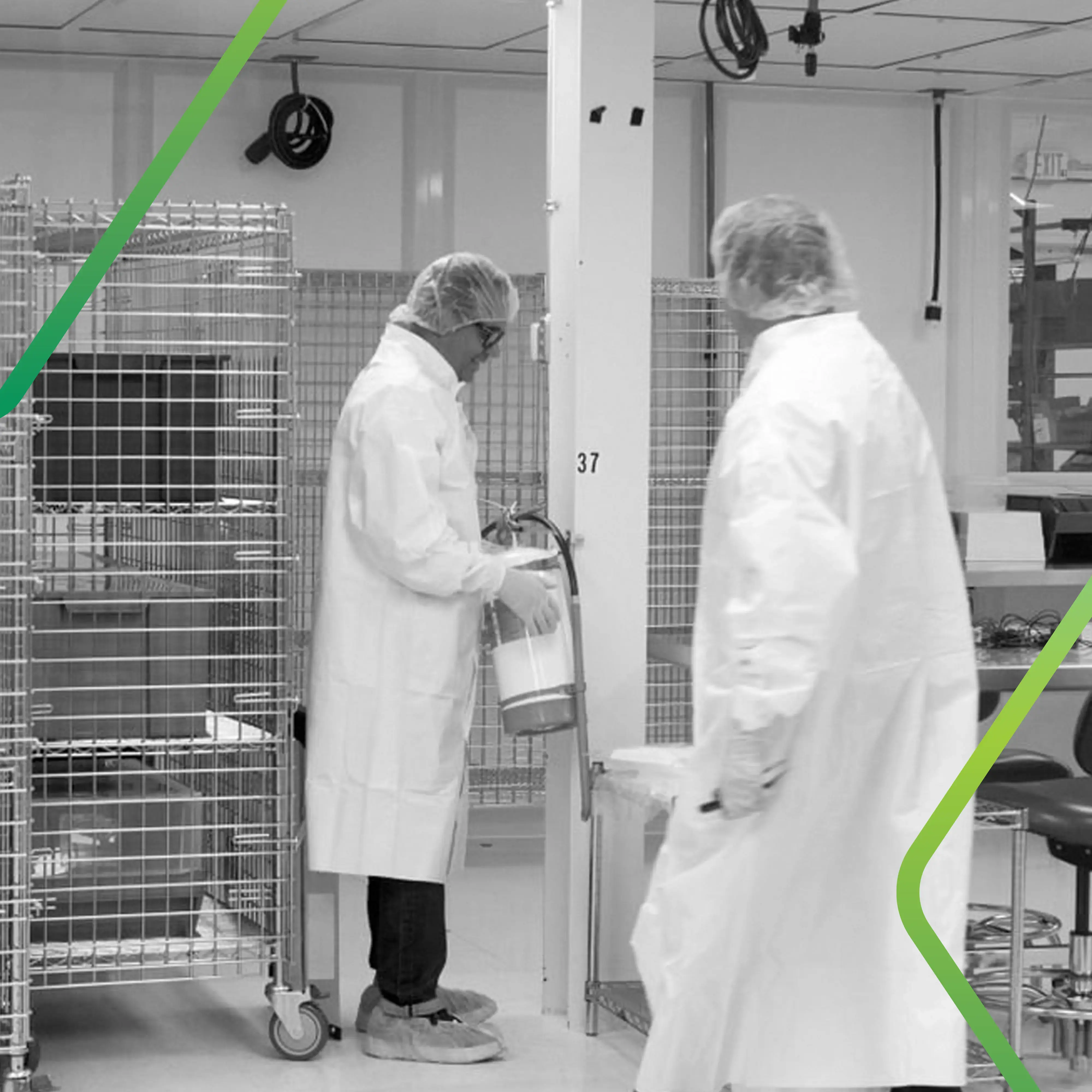4 min read
Building a Resilient Medical Device Supply Chain: Your Action Plan for Success
 Bill Croisetiere
:
Oct 8, 2025 8:52:34 AM
Bill Croisetiere
:
Oct 8, 2025 8:52:34 AM

For medical device companies navigating today's complex manufacturing landscape, your medical device supply chain can make or break your path to market. Whether you're preparing for clinical builds or scaling to meet market demand, the actions you take today to evaluate and collaborate with suppliers directly impacts your regulatory success, product quality, commercial success and operational resilience tomorrow.
Editor's note: Christina Bradford, Senior Manager, Procurement, contributed to this article.

Common Medical Device Supply Chain Questions Every Innovator Has To Face
Before diving into solutions, let's address the questions keeping medical device innovators, startups and growth stage companies up at night:
- "When should I start thinking about my medical device supply chain if I'm still in the prototyping (or earlier) phase?"
- "How do I know if a supplier needs ISO 13485 certification versus just being ISO compliant?"
- "Can I trust suppliers claiming compliance without certification?"
- "What happens to my medical device supply chain if my key vendor gets acquired?"
- "How many backup suppliers do I really need for critical components?"
- "How often should I audit my suppliers, and what should I look for?"
These questions reveal a fundamental truth: managing a medical device supply chain requires constant vigilance across multiple dimensions. Let's explore how to build a framework that answers these concerns.

Start Early: Medical Device Supply Chain Considerations Begin at Design
The costliest medical device supply chain mistakes happen before you even select your first vendor. Too many companies wait until they're ready for clinical builds to consider manufacturability, only to discover they've specified materials available from a single source or designed tolerances no supplier can consistently achieve.
Integrate supply chain thinking from Phase 0. Ask critical questions early: Is this design manufacturable at scale? Are we specifying readily available materials? What happens if our primary supplier for this custom component disappears? One medical device team learned this lesson painfully when they specified a material that seemed perfect in prototyping but required a minimum order quantity that exceeded their five-year forecast.
Even in R&D environments where the final application remains uncertain, design as if the device will reach commercial production. This approach costs nothing extra but saves enormous headaches when "this won't go to clinical use" suddenly becomes "we need 500 units for trials next quarter."
Strategic Evaluation: Separating Regulatory from Quality in Your Medical Device Supply Chain
Establishing a rigorous evaluation process that addresses both regulatory compliance and quality performance as distinct considerations is critical for your medical device supply chain success.
Regulatory Compliance: Meeting FDA and Safety Standards
Regulatory evaluation focuses on adherence to FDA or notified body standards and ensuring device safety and efficacy. When intended use involves diagnostics, prevention, or treatment, your contract manufacturer must hold ISO 13485 certification. This is non-negotiable for medical device supply chain integrity. But what about component suppliers? The answer depends on risk to patient safety, users and device function.
Here's where many startups stumble in their medical device supply chain development: suppliers claiming "compliance" without certification. While this arrangement can work, it shifts the audit burden to you. You'll need to review their quality manuals, verify procedures against FDA standards, and document their processes yourself.
Apply this framework: if component failure could directly impact patient safety or render your device non-functional for its intended medical use, certification becomes critical. That custom needle or implantable component requires different regulatory scrutiny than catalog fasteners.
Quality Performance: Ensuring Reliable Operations
Quality evaluation in your medical device supply chain extends beyond regulatory checkboxes to encompass operational excellence. This means understanding that what you buy comes from reliable sources with robust processes. Can your supplier trace their raw materials? Do they understand their own suppliers' capabilities?
Your quality evaluation should answer specific operational questions: What's their on-time delivery performance? How do they handle non-conformances? What are their internal KPIs? These metrics determine whether your medical device supply chain will deliver what you need, when promised, meeting all required specifications.

Transform Vendor Relationships into True Partnerships
The difference between a vendor and a partner in your medical device supply chain isn't just semantics. True partners become extensions of your business, offering expertise you may lack internally.
This collaborative approach means suppliers should provide value beyond order fulfillment. When you say "we need XYZ," a partner responds with recommendations: "That material might shrink during autoclaving. Consider this alternative." They understand your product's intended use and help avoid specifications that become impossible to manufacture.
Build these relationships through regular engagement. When you can pick up the phone and reach someone who knows your business, not just your purchase orders, you've built the trust that ensures help arrives when you need it most.
Implement Redundancy Before Crisis Strikes
Geographic diversity and multiple approved vendors aren't luxuries in today's medical device supply chain environment. They're insurance policies. Recent global events from pandemics to trade conflicts have shown how quickly single-sourced strategies can crumble.
Focus redundancy efforts on custom, high-risk components first. While standard hardware has numerous sources, a custom-molded component or specialized material for example needs backup options. Maintain an Approved Vendor List (AVL) with multiple qualified sources for each critical item in your medical device supply chain.
Create Visibility Through Systems and Data
A robust medical device supply chain requires transparency across both regulatory compliance and quality metrics. Track certification expiration dates alongside delivery performance, monitor audit results while measuring defect rates.
While larger companies might invest in comprehensive digital platforms, smaller organizations can achieve effective visibility through disciplined processes and targeted AI tools. What matters is having data to drive decisions: Are certifications current? Did shipments arrive on time? Do quality metrics meet requirements?
Embrace Continuous Improvement as Standard Practice
Schedule supplier reviews annually at minimum but increase frequency based on risk. Single-sourced components, suppliers in unstable regions, or vendors with quality issues merit quarterly or even monthly check-ins. One company learned this lesson when their sole supplier was located in a conflict zone, turning routine medical device supply chain reviews into crisis management sessions.
Taking Action: Your Next Steps for Medical Device Supply Chain Excellence
Building a resilient medical device supply chain requires intentional, systematic improvement across both regulatory and quality dimensions. Start by asking yourself:
- Have I mapped all critical components and their suppliers?
- Are regulatory requirements documented and verified for each supplier tier?
- Do I have real-time visibility into supplier performance metrics?
- Which AI tools could automate routine supply chain monitoring tasks?
- When did I last verify critical suppliers' certifications?
For companies lacking internal resources to manage complex medical device supply chain requirements, partnering with experienced contract manufacturers who understand the unique demands of medical device development can provide both expertise and established supplier networks.
Your medical device supply chain strategy directly impacts your ability to deliver safe, effective products to market. The investment you make in evaluation, collaboration, and systematic improvement today determines your resilience tomorrow.
About the author
Bill Croisetiere serves as Senior Director, Integrated Supply Chain & Operations at Veranex, bringing 34 years of extensive global experience and a profound internal drive for delivering successful results that align with client interests. His distinguished career, including two decades at Covidien, spans diverse management roles across manufacturing operations, supply chain, engineering, program management, IT, sales, and business development within global and private medical device, pharmaceutical, molding, and technology companies.
Based in Providence, Bill is a seasoned expert in critical areas such as manufacturing processes, sustaining and value engineering, product identification (UDI), advanced packaging systems, ERP implementation, and RF warehouse management solutions. This rich, multifaceted background provides him with a unique perspective to thoroughly analyze client needs. He excels at aligning business models with commercial and financial goals, ensuring that Veranex’s integrated supply chain strategies are optimized to support innovative product development and engineering projects from concept through to commercialization. His PMP and CSCP certifications further underscore his commitment to excellence in program and supply chain management.



